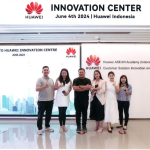Unveiling the Power of Cloud Computing: Revolutionizing the Digital Landscape

In the era of digital transformation, cloud computing stands as a beacon of innovation, reshaping the way businesses store, manage, and process data. From startups to multinational corporations, organizations worldwide are embracing cloud technologies to drive agility, scalability, and efficiency. This post delves into the realm of cloud computing, exploring its fundamental concepts, key benefits, and transformative impact on the modern business landscape.
Understanding Cloud Computing:
At its core, cloud computing refers to the delivery of computing resources—including servers, storage, databases, networking, software, and analytics—over the internet on a pay-as-you-go basis. Instead of owning and maintaining physical infrastructure, users access these resources remotely from cloud service providers’ data centers, leveraging their scalability, reliability, and cost-effectiveness.
Key Components of Cloud Computing:
- Infrastructure as a Service (IaaS): IaaS provides virtualized computing resources, such as virtual machines, storage, and networking, delivered over the internet. Users have full control over the operating systems, applications, and development frameworks deployed on the infrastructure.
- Platform as a Service (PaaS): PaaS offers a complete development and deployment environment in the cloud, including tools, middleware, and runtime environments. Developers can build, test, and deploy applications without worrying about infrastructure management.
- Software as a Service (SaaS): SaaS delivers software applications over the internet on a subscription basis. Users access applications hosted in the cloud through web browsers or APIs, eliminating the need for installation, maintenance, and updates.
Benefits of Cloud Computing:
- Scalability: Cloud computing enables businesses to scale resources up or down dynamically to meet changing demands, ensuring optimal performance and cost efficiency.
- Cost Savings: By eliminating the need for upfront investments in hardware, software, and infrastructure maintenance, cloud computing reduces IT capital expenses and operational costs.
- Flexibility and Agility: Cloud computing provides businesses with the flexibility to adapt quickly to market changes, launch new products and services, and experiment with innovative solutions without long lead times.
- Accessibility and Collaboration: Cloud-based applications and data are accessible from anywhere with an internet connection, enabling remote work, global collaboration, and real-time sharing of information.
- Reliability and Security: Cloud service providers invest heavily in infrastructure redundancy, data backup, and cybersecurity measures to ensure high availability, data protection, and compliance with industry regulations.
Transformative Impact of Cloud Computing:
- Digital Transformation: Cloud computing accelerates digital transformation initiatives by providing the foundation for agile development, data analytics, AI, IoT, and other emerging technologies.
- Business Innovation: Cloud computing fosters innovation by enabling rapid prototyping, experimentation, and iteration, empowering businesses to bring new ideas to market faster and more cost-effectively.
- Global Reach: Cloud computing enables businesses to expand their reach globally by deploying applications and services in data centers around the world, reaching customers and users in diverse geographic locations.
- Sustainability: Cloud computing promotes environmental sustainability by optimizing resource utilization, reducing energy consumption, and minimizing hardware waste through virtualization and shared infrastructure.
In conclusion, cloud computing is a transformative force reshaping the digital landscape, driving innovation, agility, and efficiency across industries. As businesses continue to embrace cloud technologies, they will unlock new opportunities for growth, differentiation, and competitive advantage in the dynamic and interconnected world of the 21st century.








